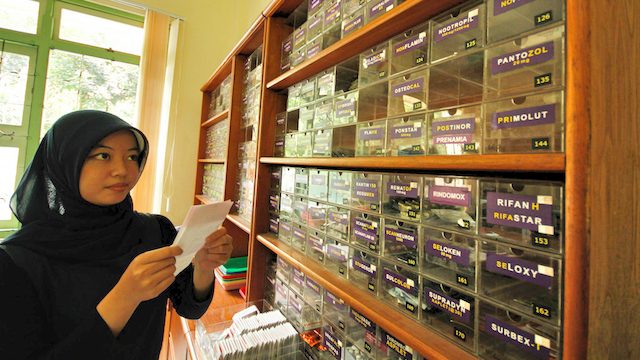SUMMARY
This is AI generated summarization, which may have errors. For context, always refer to the full article.

As we get ready this year to start implementing the post-2015 Sustainable Development Goals (SDGs), one item high on the agenda is universal health coverage (UHC) – ensuring that everyone can obtain the health services they need without suffering financial hardship to pay for care.
The UHC goal is enshrined in SDG3 Target 8, which calls to “achieve UHC, including financial risk protection, access to quality essential health-care services and access to safe, effective, quality and affordable essential medicines and vaccines for all.”
UHC expects that all people can access quality health services and are safeguarded from public health risks, and that countries assure financial protection for health services provided to all members of society. Although it is not a one-size-fits-all concept, UHC requires governments to remove inefficiencies on the health supply side while reducing out-of-pocket payments for health through prepayments primarily sourced from government allocation and mandatory payroll deductions from the formal sector. Several developing countries in Asia and the Pacific have already achieved UHC, while others are now actively pursuing this goal. Although there is no single path to success, a growing number of countries have enjoyed good results with social health insurance.
Traditionally, social health insurance was defined as a health financing scheme that mobilizes resources with mandatory payroll taxes or insurance contributions. However, what we are now seeing is countries using social health insurance more as a mechanism to blend government budgetary allocations, mandatory insurance contributions and voluntary insurance premiums into a health insurance fund that purchases health services efficiently and equitably while demanding quality from both public and private health care providers. With the expanding reliance on government budgetary allocations given large informal populations that are subsidized, this approach is increasing described as national health insurance systems rather than social health insurance schemes.
In the last few years, Indonesia, the Philippines and Viet Nam have scaled up the implementation of their national health insurance systems with their respective single health insurer similar, to the Republic of Korea did before with its National Health Insurance Corporation, also funded by a combination of mandatory contributions, self- payments and government subsidies.

Indonesia began implementing its own national health insurance scheme in January 2014, in mid-2013 the Philippines amended its national health insurance law to strengthen its mandatory and universal nature, and Viet Nam enacted amendments calling for Universal Health Insurance last 2014. As they pursue UHC, these three developing Southeast Asian countries can learn many insights and guidance from the Korean experience.
All three have achieved population coverage of more than 60% of the population – with the Philippines nearing 90% – and now must figure out how to conduct strategic purchasing of health services to ensure coverage of both people and needed health services. Korea’s huge investments in information technology had enabled it to purchase strategically and monitor quality of health services, and similar necessary investments by these 3 countries can be guided by the Korean experience.
Strategic purchasing in Korea helped drove investments in increasing the supply of needed health services and as expanding population coverage demand the same increase in these three countries, lessons from Korea will guide them in ensuring appropriate and cost-effective investments in health professionals and facilities.
With pharmaceutical expenditures accounting for most of the out-of-pocket payments, the Korean experience shows how Indonesia, the Philippines and Viet Nam can develop and implement their respective with comprehensive health insurance and pharmaceutical policies on drug benefits, pricing and reimbursement. For instance, since the private sector is a significant provider of health services with more than half of hospital beds in private hospitals in the Philippines and growing number of private primary care and hospital providers in Indonesia and Viet Nam, Korea’s efforts in in harnessing and aligning its private health sector would be helpful. And as we learned during two recent knowledge sharing sessions in Manila and Seoul, each of these three countries has their own unique context and challenges, but it’s clear that all of them see Korea’s National Health Insurance Corporation as one of their inspirations.
Getting their systems right as Korea did is the goal, and ADB will fully support Indonesia, the Philippines and Viet Nam in their efforts to implement national health insurance systems including the application of an UHC monitoring and evaluation framework to guide the implementation and ensure the delivery of UHC in the soonest possible time. – Rappler.com
Eduardo P. Banzon is a Senior Health Specialist at the Sustainable Development and Climate Change Department of the Asian Development Bank. Dr. Banzon champions UHC and has long provided technical support to countries in Asia and the Pacific in their pursuit of this goal. Before joining ADB, he was President and CEO of the Philippine Health Insurance Corporation, WHO regional adviser for health financing, World Bank senior health specialist, and a faculty member of the University of the Philippines’ College of Medicine and the Ateneo University Graduate School of Business.
This piece was first published in the ADB blog.
Add a comment
How does this make you feel?
There are no comments yet. Add your comment to start the conversation.